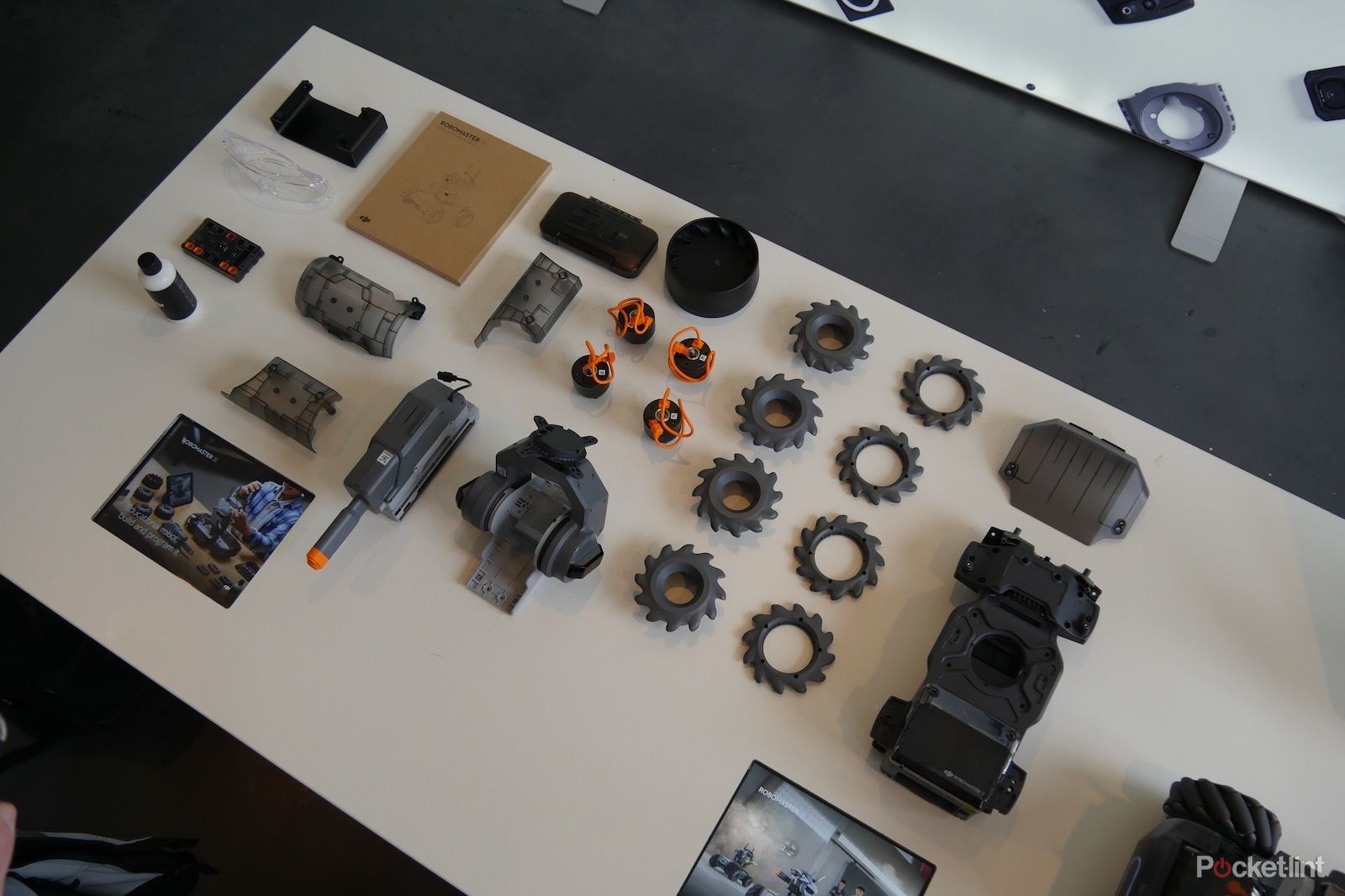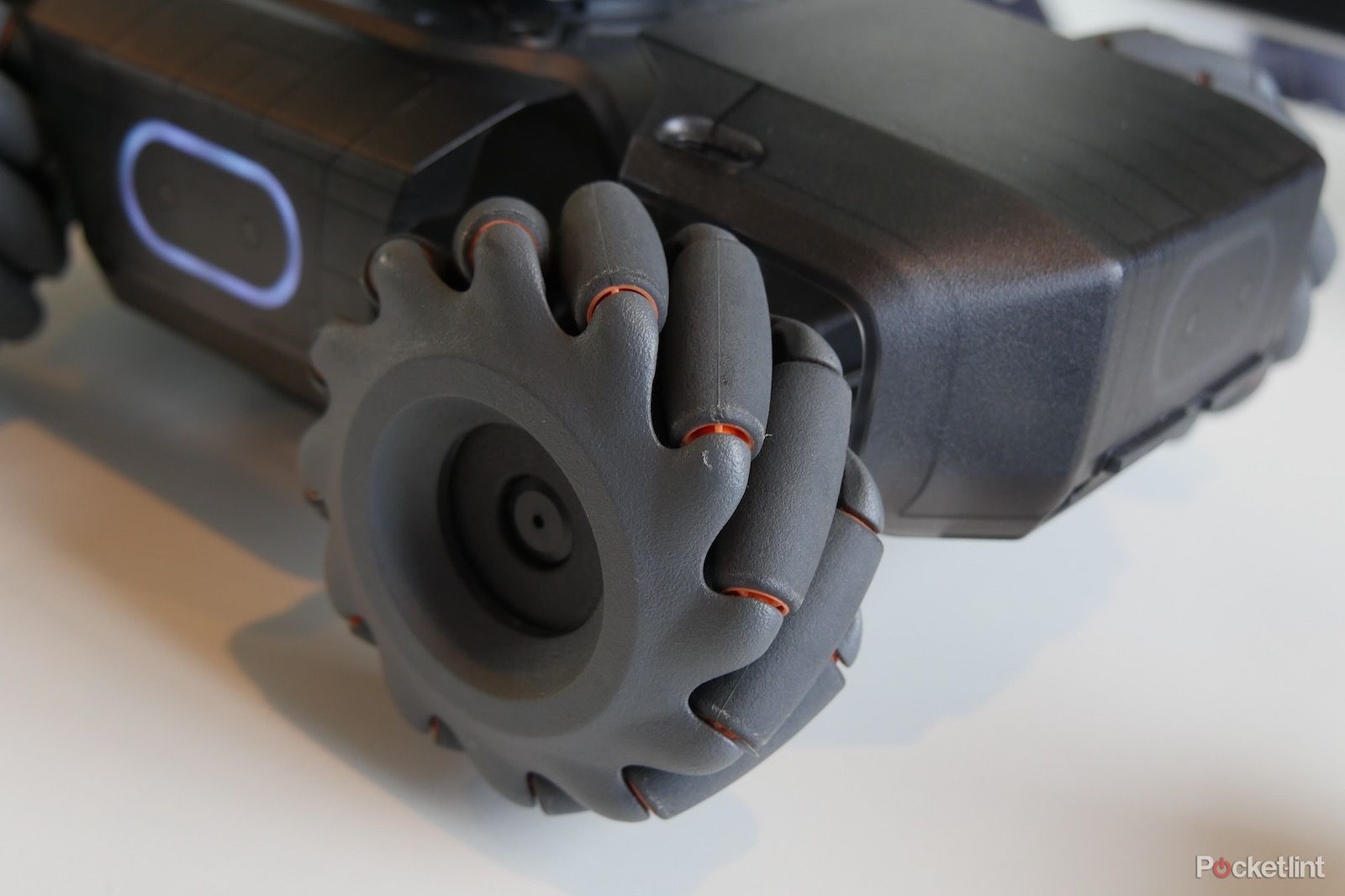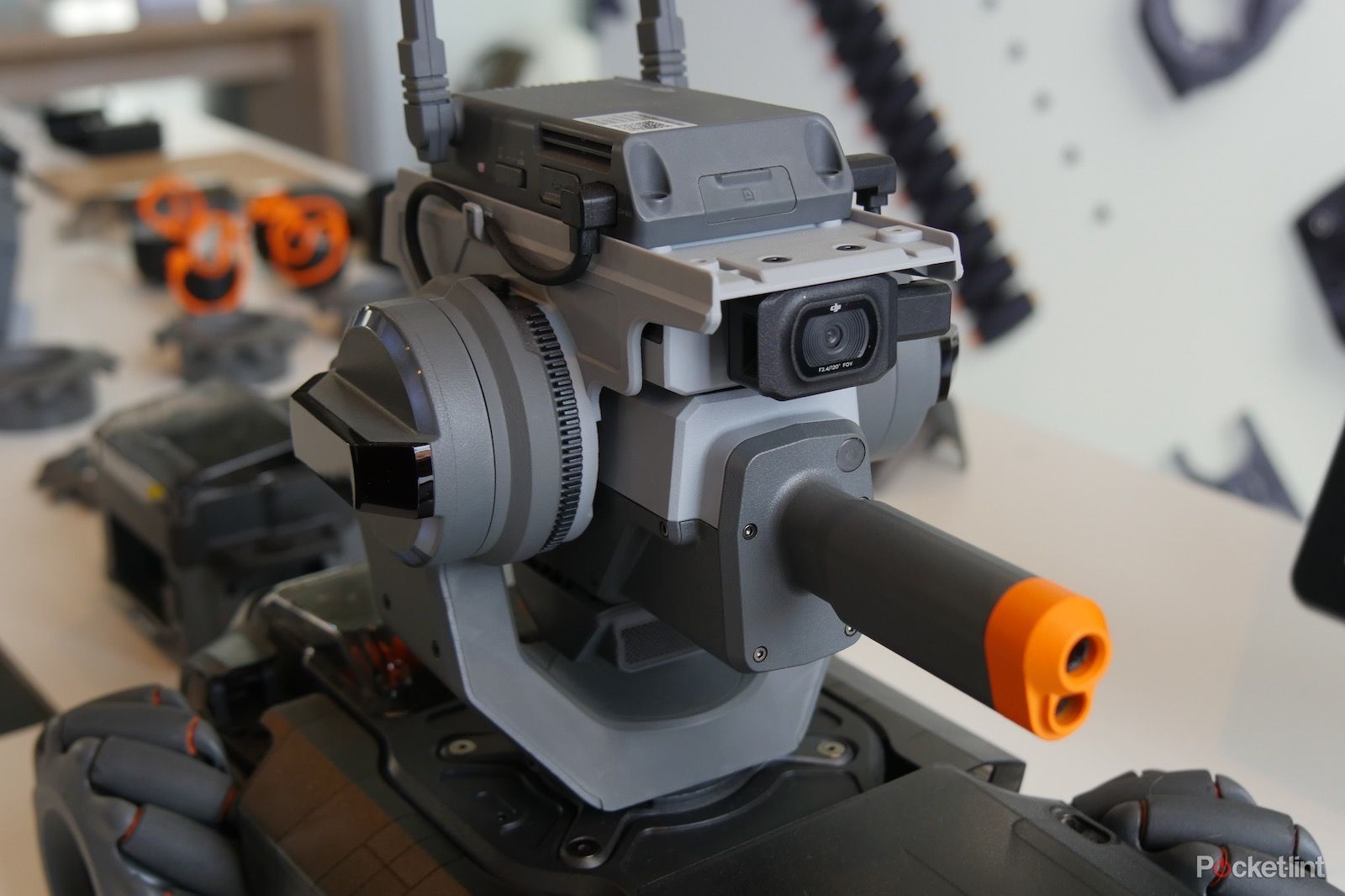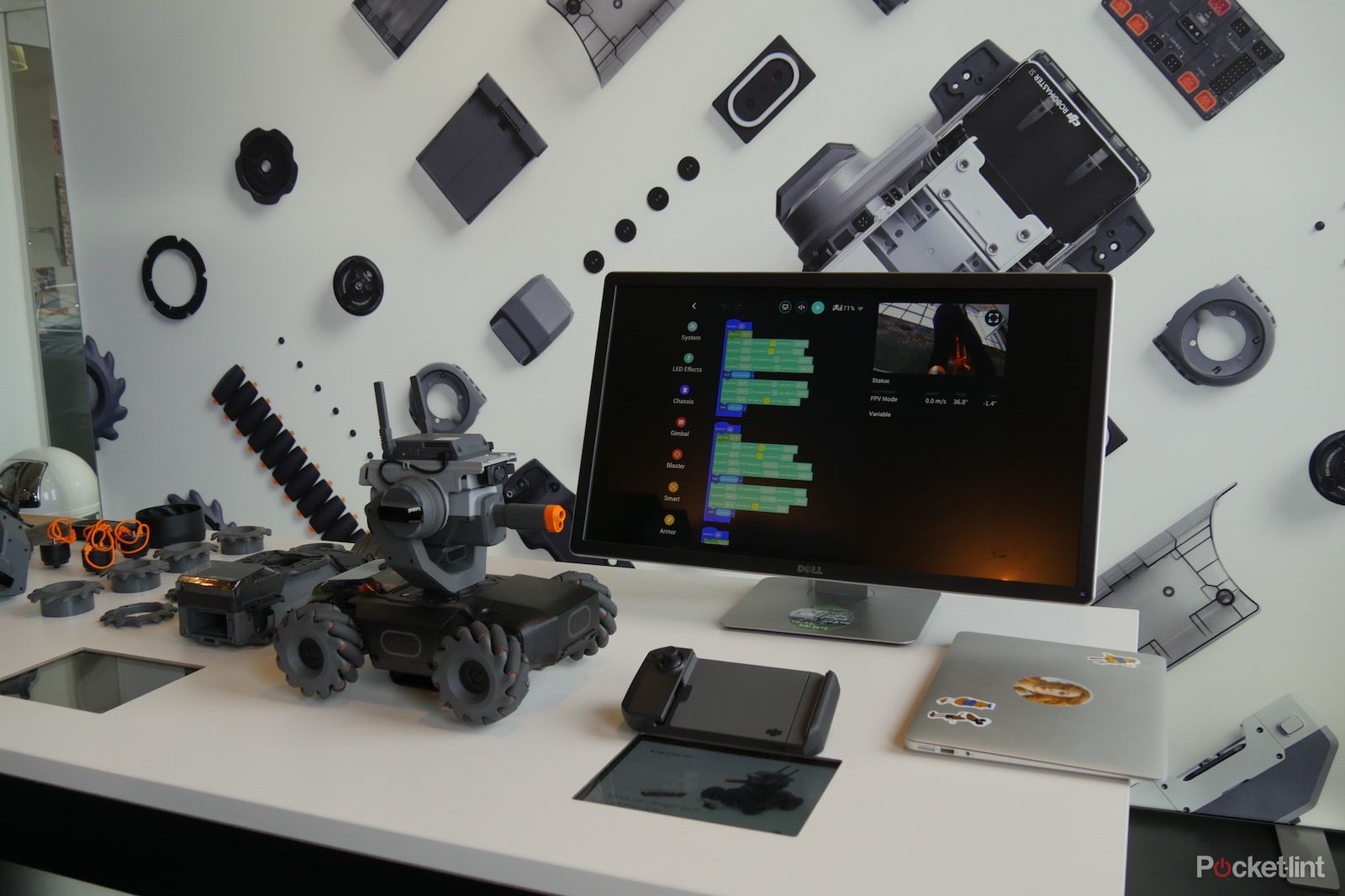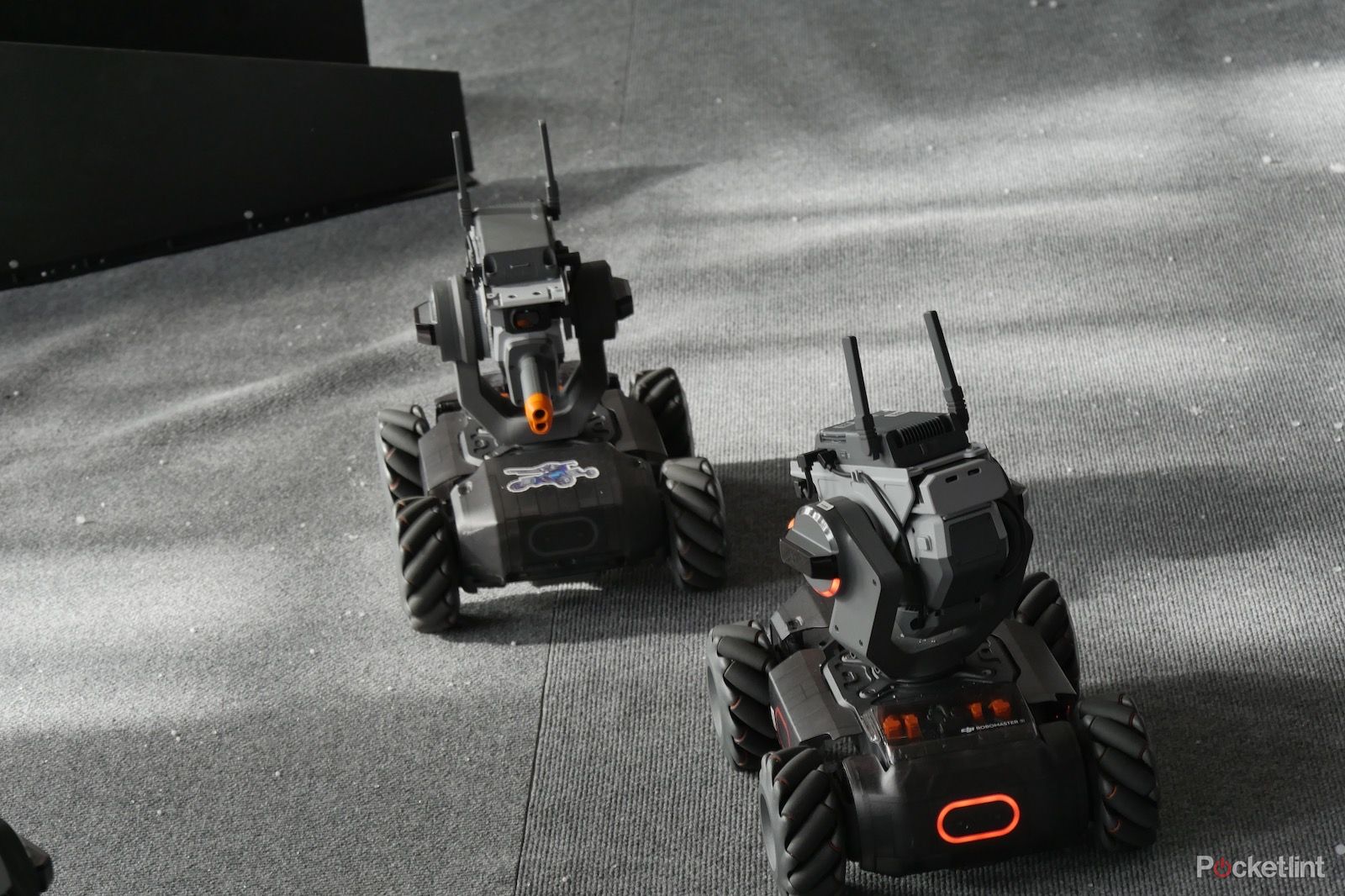DJI’s move into robots may seem sudden to the casual onlooker, but the company has been building a name for itself in the world of battling robots through its RoboMaster competition in China each year since 2015. For a couple of years before that, it was running a summer camp for aspiring engineering students.
The competition itself has become pretty popular. In fact, 2018's final reached nearly a million viewers on Twitch.
Enter: the RoboMaster S1. This robot represents the spirit of the annual summer competition, embodied in a product for consumers. S1 stands for "Step 1" and hints very strongly that this is only the beginning of DJI's venture into consumer robots.
Our quick take
While it may seem like an expensive toy, the RoboMaster S1 is a lot of fun and teaches some valuable basics in coding. Gone are the days when kids' coding lessons meant pressing some direction buttons on a Roomba-lookalike robot in a school classroom. With DJI's robot, you can teach a robot new tricks, how to respond to different visual cues and even get it to play a tune.
The real expense starts when you want to battle it against other robots, but that's also when it gets really fun. It's nowhere near affordable enough to be on everyone's gift lists, but we suspect this would make a fantastic offering for "the one who has everything".
The DJI RoboMaster S1 is now available in the UK, Europe and US, priced at £499,€549 and $499 respectively.
As with its drones, there's also an optional extra pack - the PlayMore Kit - including a dedicated gamepad, extra gel beads, a battery and gel bead container. It's priced at £155 in the UK.
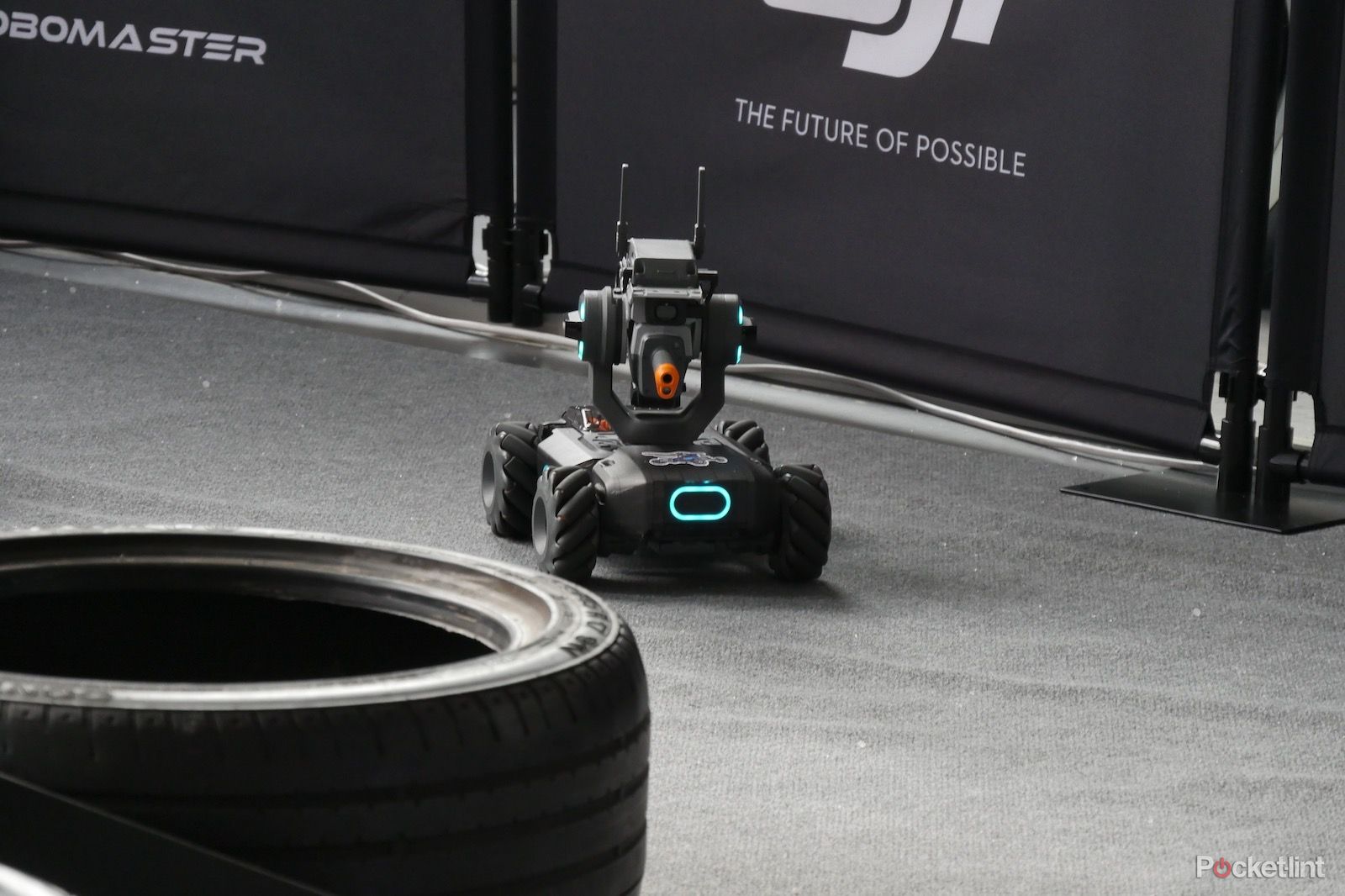
DJI RoboMaster S1 initial
| FOR | AGAINST |
|---|---|
|
|
|
DJI RoboMaster S1
The set up
- Build-it-yourself out of the box
- 107 parts + 101 screws
- Powered by custom processor
Undoubtedly one of the RoboMaster S1’s biggest draws is that you build it yourself. It ships in its separate parts, and the user then has to put it together before starting the coding and programming journey. That’s a total of 107 parts and 101 screws.
Once built, it’s programmed either using the simple to use Scratch 3.0, which is a much more basic and visual system or - for the more advanced user - Python.
The idea being is that, using any of DJI’s bespoke apps and educational programs, you can work your way up from being a complete novice to an expert, and gradually make the RoboMaster S1’s abilities and behaviours more complex the longer you have it. The Road to Master and RoboAcademy programs combined give any user the tools they need to develop.
Inside, there's a custom high power processor which DJI designed in house to manage all the input from all the various sensors and camera, processing the information and performing the responses to those cues.
Formidable looks
- Omnidirectional movement
- 360-degree turret
- Bead and IR blasting
Once built, the S1 looks very much like you’d imagine a programmable battle robot might look. It has these crazy looking wheels, with “tyres” made of 12 smaller, miniature rollers set at an angle. These aren’t just for looks, these are a key part of the way the RoboMaster S1 moves: it’s omnidirectional. That means it’s not just forwards, backwards and turning to change direction: it can actually move sideways, or diagonally, or any which way you desire. Just like Charlie Bucket’s glass elevator.
On the top, looking all formidable and fierce is a gun turret. This can either shoot plastic beads, or infra-red rays, allowing you to battle with other RoboMaster machines. These plastic beads are reusable and non-toxic, but probably not for the environmentally conscious consumer. For those, it’s probably best to stick with the IR blasters.
We witnessed a few battles using these plastic beads, and the result was thousands of tiny beads scattered across the floor. Many of those beads flew in directions unexpected. Thankfully, DJI has programmed the firing power to ensure that no one can get hurt by them.
This turret - of course - can pivot on its base (a full 360-degree), and move up or down to aim its camera and gun at anything in its vicinity. This is either so you can aim your gun at your competitor, or use the camera to look around the vicinity. It's also the camera the robot uses in autonomy to follow cues.
The S1 is quite a big unit, with most of its exterior made from plastic. If we were to compare to anything in popular culture, it looks a little like the head of an AT-ST walker from Star Wars had its head severed and attached to the chassis of a remote control 4x4.
The tech
- 31 sensors
- Program using Scratch 3.0 or Python
- 35 min battery life
While all of this is awesome, it’s the tech behind it that makes it really interesting. DJI has used the experience it gained from its drones and camera stabilisers to build all manner of sensors and computational ability into this machine.
There are 31 sensors dotted around the S1’s body, most of which designed to detect when it’s been struck by an IR beam, but also detects impact and - combined with the camera at the front - can detect people and objects, and can even be taught to recognise patterns.
As for the camera itself, that’s a 1080p sensor which then live beams the footage directly to the DJI app on your tablet or phone. In regular control mode, you can move the unit around, aim and fire with touchscreen controls, or with a physical joypad.
Using the programming tools you can also teach the camera to follow a line on the ground. Even to the point where it knows which way to go when it comes to a junction. We watched it follow a route repeatedly, backwards and forwards with a loop at the end, and each time it choose to turn right at the junction and follow the route anti-clockwise.
On the odd occasion where it lost track of the line, it was only confused for a second or so, before it found its bearings, got back on track and continue onwards.
Another demo we saw pitted three RoboMaster S1s against each other in a game of finding cards with numbers on them. The winner was the one who navigated the course - all controlled manually - and scanned all the cards with its camera.
Without spending some proper time with it, it's almost impossible to get a full sense of what the Robomaster S1 can do. In fact, since you can program it how you want, what it can do is down to the limits of your imagination.
How long you can go for, sadly, isn't down to your imagination. DJI claims the battery will last up to 35 minutes of play time before it'll need recharging again. It's not too slow to recharge though. Its 2,800mAh capacity should be quickly filled by the 29W charger.
DJI RoboMaster S1
To recap
While it may seem like an expensive toy, the RoboMaster S1 is a lot of fun and teaches some valuable basics in coding. Gone are the days when kids' coding lessons meant pressing some direction buttons on a Roomba-lookalike robot in a school classroom. With DJI's robot, you can teach a robot new tricks, how to respond to different visual cues and even get it to play a tune.

